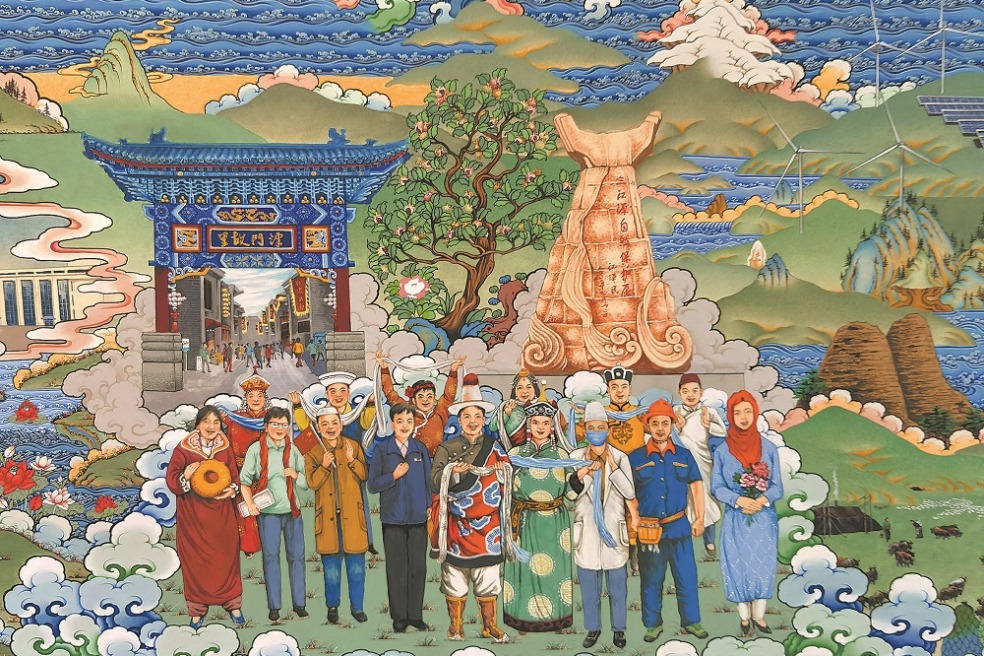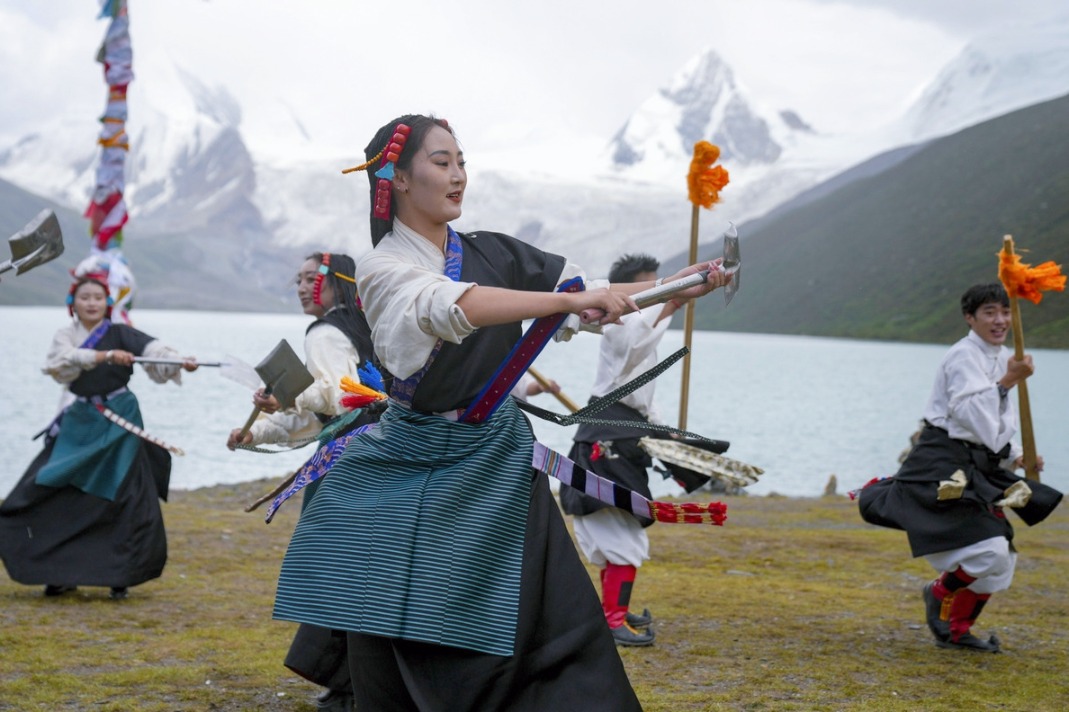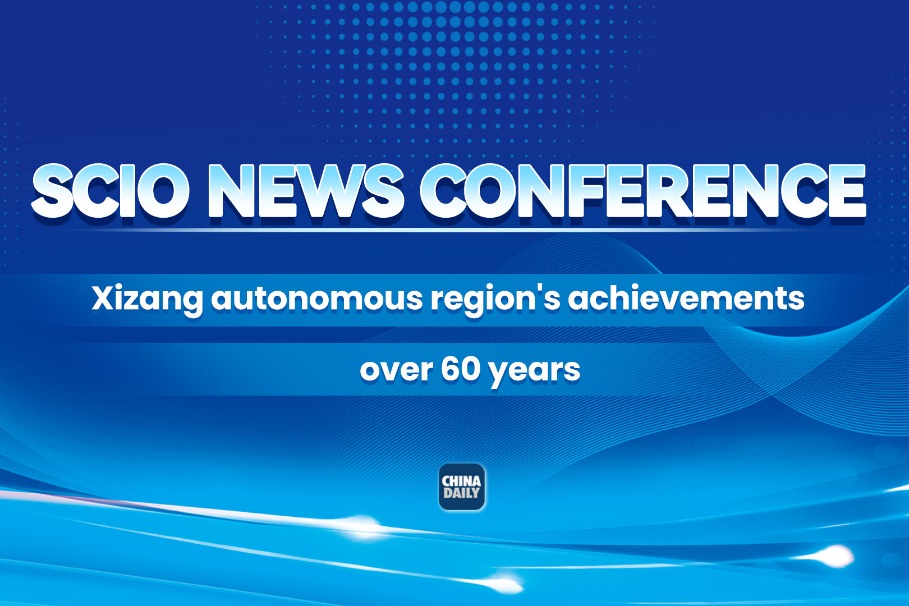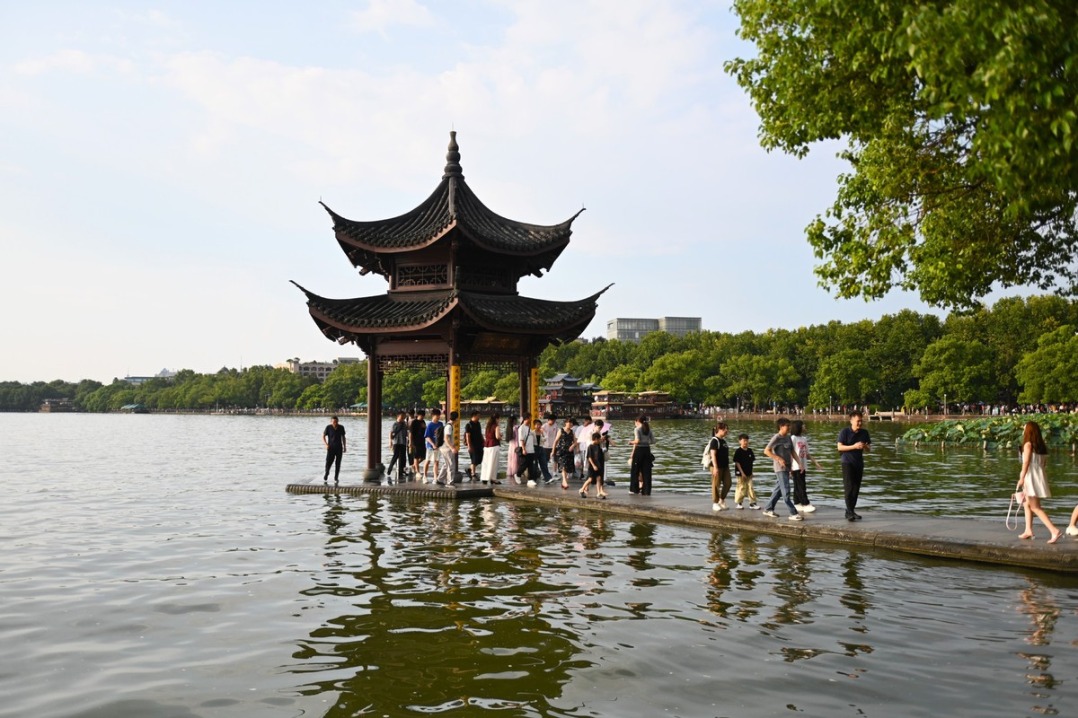Qinghai rides carpets, culture to new prosperity
From Thangka paintings to quality rugs, province is leveraging its heritage, history


Sonam Gyaltso, 25, works alone in the studio next door, sculpting a leopard out of red clay.
"I'm local. I came here as an apprentice eight years ago after graduating from high school. Now I have a monthly salary of over 4,000 yuan. Five of my 40 high school classmates now study Regong art," he said.
Tongren has built a provincial-level Regong culture industrial park in Qinghai, bringing together 25 large painting academies and 356 cultural enterprises engaged in Regong art, said Geng Bin, deputy head of Qinghai's Culture and Tourism Department.
The painting academies operate under the "painting academy plus farmers plus base" model, and are mainly engaged in research, creation of works, training, production, sales, exhibitions, collections, and import and export business. They offer free training, accommodation, and employment, and have boosted annual per capita income by over 60,000 yuan.
To expand the market, the government of Tongren has set up over 200 sales points for Regong art in cities such as Beijing, Shanghai and Tianjin. Tongren has also established a center for promoting Regong art in the 798 Art Zone in Beijing to enhance the influence and popularity of the Regong art brand.
The works produced there are exported to Japan, Thailand, South Korea, Malaysia, France, India, Nepal and other countries.
By 2024, Tongren's cultural sector employed 24,000 people — up 8,600 from 2023 — and earned 454 million yuan in revenue, Geng said.
"Regong", which means "Golden Valley" and "where dreams come true" in Tibetan, lives up to its name as countless young artists chase their aspirations.
























